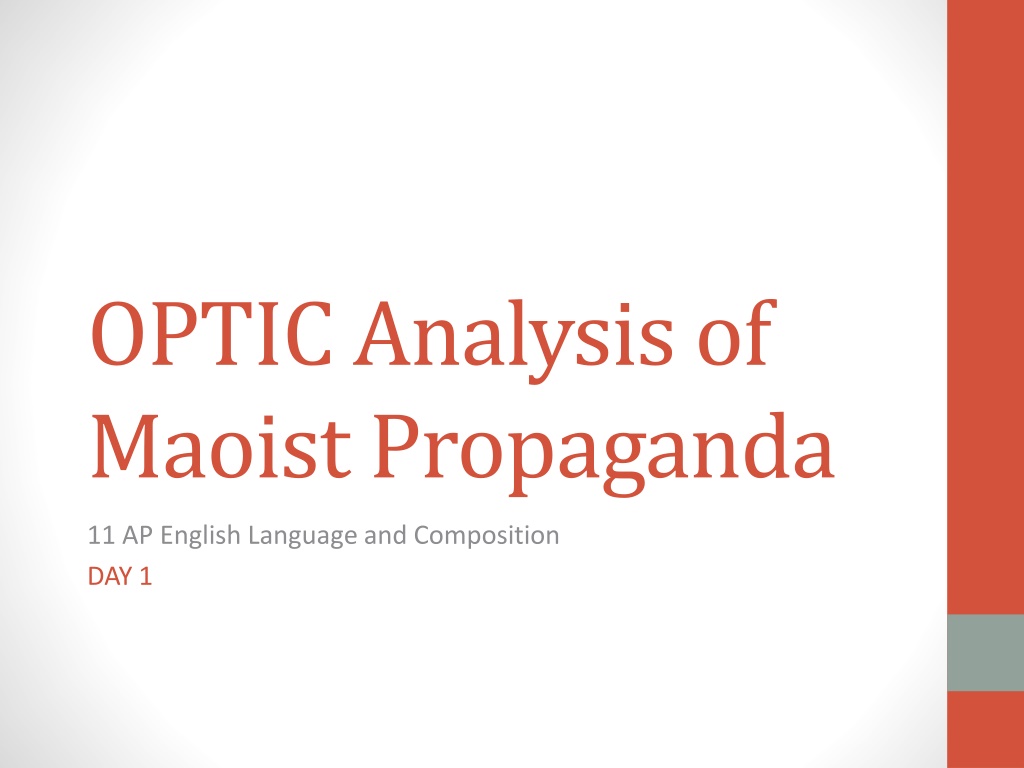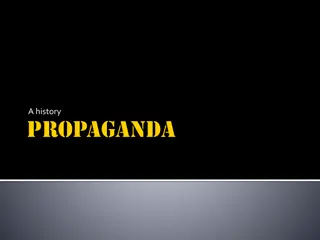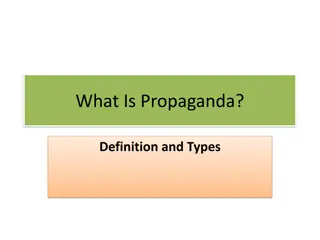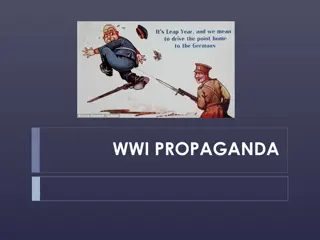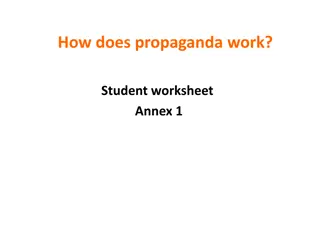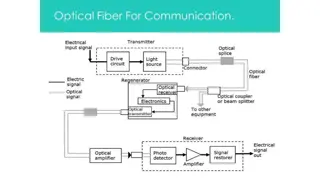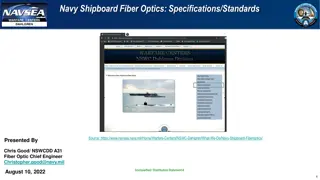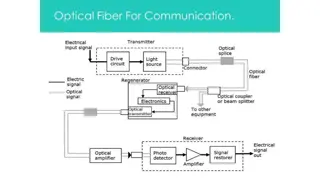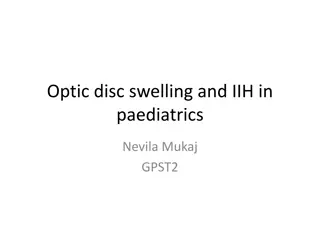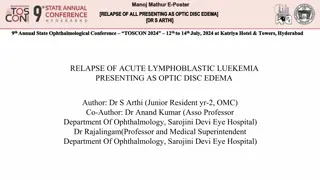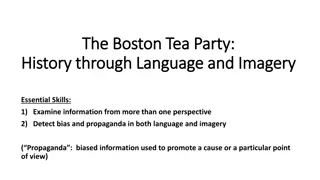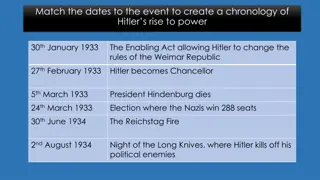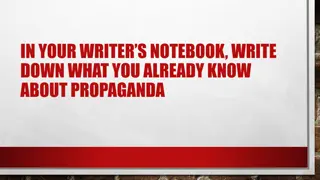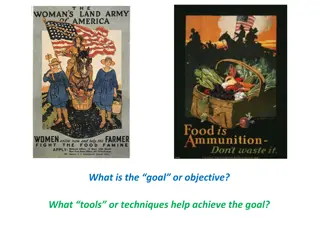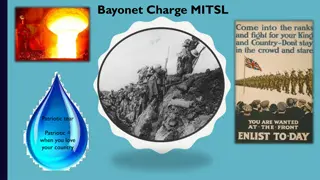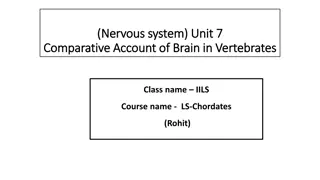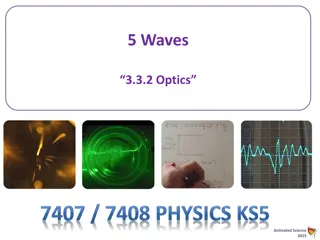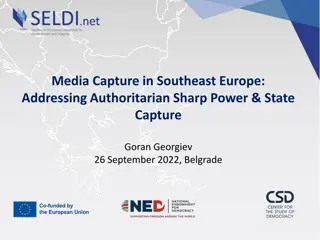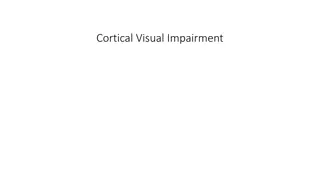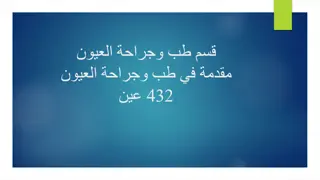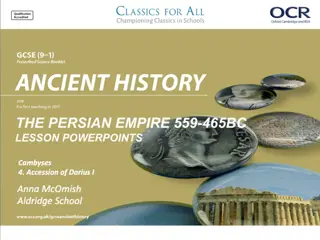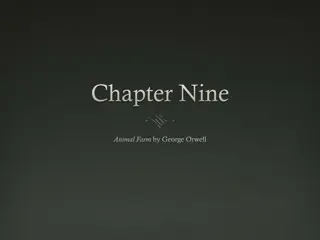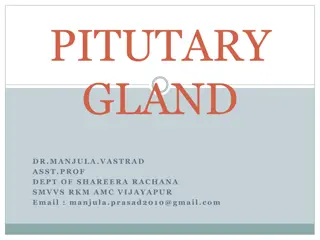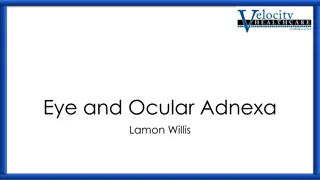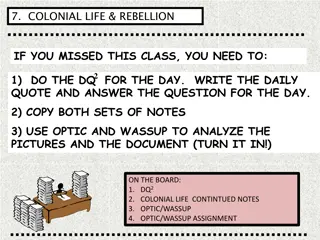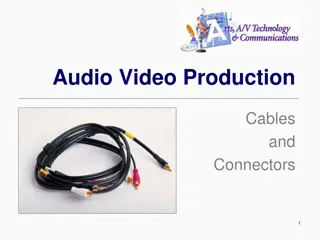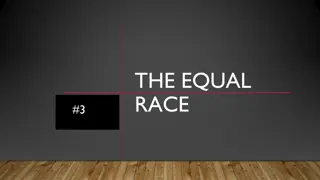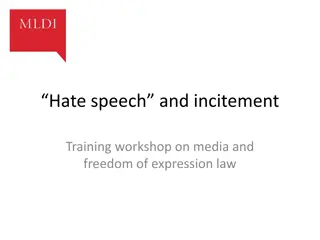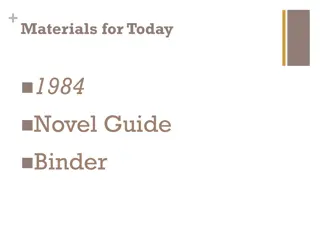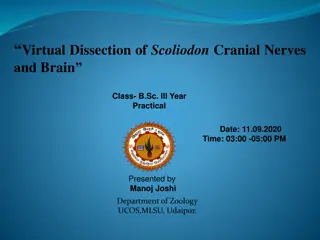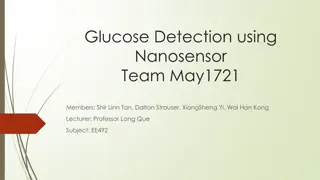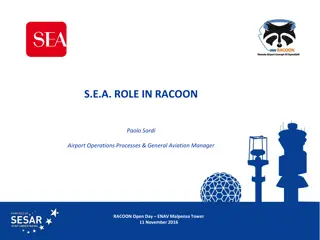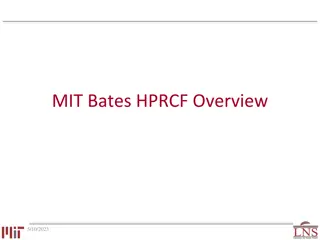Understanding Maoist Propaganda Through OPTIC Analysis
Explore the use of OPTIC analysis to dissect Maoist propaganda posters from the Chinese Cultural Revolution. Uncover the hidden messages and visual rhetoric employed by the government to influence perceptions and promote certain ideologies.
Download Presentation

Please find below an Image/Link to download the presentation.
The content on the website is provided AS IS for your information and personal use only. It may not be sold, licensed, or shared on other websites without obtaining consent from the author. Download presentation by click this link. If you encounter any issues during the download, it is possible that the publisher has removed the file from their server.
E N D
Presentation Transcript
OPTIC Analysis of Maoist Propaganda 11 AP English Language and Composition DAY 1
Agenda: 1. Do Now: Review Pre-Reading + Discussion 2. OPTIC Notes Review definition of propaganda Review OPTIC analysis strategy 3. Large Group Analysis of Propaganda Posters 4. Small Group Analysis of Propaganda Posters 5. Small Group Analysis Presentations 6. Individual OPTIC Self-Assessment Reflection
Objectives: SWBAT 1. apply OPTIC to analyze the author s message and explain the author s argument 2. reference specific visual elements of the images to support their analysis of the author s message and argument
Do Now: Review Pre-Reading + Discussion Please take out your reading from last night s homework and reflect on the following questions in your notes: 1. Who was Mao Zedong? 2. What were the apparent aims of the Chinese Cultural Revolution? 3. Who was involved in the Chinese Cultural Revolution? 4. What, in your opinion, is bourgeois ideology and proletarian ideology? HINT: think back to what you learned in AP Euro.
Do Now: Review Pre-Reading + Discussion To begin our discussion, share your responses with the person sitting next to you. (3 min) Next, let s discuss your insights as a whole group. 1. Who was Mao Zedong? 2. What were the apparent aims of the Chinese Cultural Revolution? 3. Who was involved in the Chinese Cultural Revolution? 4. What, in your opinion, is bourgeois ideology and proletarian ideology? HINT: think back to what you learned in AP Euro.
Propaganda What does this word mean? Why does it matter?
Propaganda Today, we will be focusing on looking at some propaganda posters from China s Cultural Revolution. We will use these images as the basis for learning how to analyze visual rhetoric. Visual rhetoric is HUGELY IMPORTANT in the context of understanding rules of rhetoric and persuasion. Sometimes, people don t use words to influence our thinking, they use pictures and images, instead.
Propaganda Guiding Questions: As we look at these examples of visual rhetoric today, we will be using to following questions to guide our investigation: How did the Chinese government portray the Chinese people and why? How did the Chinese government portray Chairman Mao? What are the reasons behind this portrayal? What symbols, patterns are colors are prevalent in these images? What is the impact of these rhetorical elements? What are the chief arguments of these posters?
OPTIC Notes OPTIC is an acronym like SOAPSTONE and DIDLS that we can use to analyze visual rhetoric. As you analyze visual texts, including paintings, photographs, advertisements, maps, charts or graphs, the OPTIC strategy can help you construct meaning. OPTIC stands for Overview, Parts, Title, Interrelationship, and Conclusion.
OPTIC Notes As you examine a visual text, respond to each element: O- Write a brief overview of the image. In one complete sentence, explain what is this image about? P- Key in on all of the parts by noting any details that seem important. This can be anything: color, figures, textures, scenery, groupings, shadings, patterns, numbers, etc. T- Use the title to clarify the subject of the image. Consider both literal and metaphoric meanings. What does the title suggest? I- Specify the interrelationships in the image. In other words, how the parts are related, both to one another and the image as a whole. Consider how the parts come together to create a mood or convey an idea or argument. C- Write a conclusionparagraph about the image as a whole: think about what the artist, photographer, creator, or designer might be trying to capture and convey, and what ideas, arguments, or implications this image presents.
Large Group Analysis Turn China into a prosperous, rich and powerful industrialized socialist country under the leadership of the Communist Party and Chairman Mao! (1954) O- P- T- I- C-
Small Group Analysis: Now, you will complete this same analysis process by working in your group to analyze a propaganda image. You will complete your analysis in your graphic organizers. Feel free to use your pre-reading to help inform your analysis of the visual images. Be sure to take copious notes, because once you have completed your analysis in your group, you will be presenting your findings to another group.
Small Group Analysis Group A Group B Please complete an OPTIC analysis of the following image: Please complete an OPTIC analysis of the following image:
Small Group Analysis Presentations Your group will be paired up with another group who analyzed the other visual image. Please share your insights about the OPTIC elements of your poster with the other group. Each group should be taking notes in the blank portion of their graphic organizers. Feel free to ask questions or push back on one another s analysis. REMEMBER: you are referencing specific elements of the visual images to support your OPTIC analysis.
OPTIC Self-Assessment/ Reflection Once you and your group have concluded the presentation activity, please complete the self-assessment/ reflection portion of your graphic organizer.
OPTIC Analysis of Maoist Propaganda 11 AP English Language and Composition DAY 2
Agenda: 1. Do Now: Review OPTIC Notes + Analysis 2. Independent OPTIC Analysis 3. OPTIC Analysis Essay 4. Peer Review of OPTIC Analysis Essay 5. Independent Revisions 6. Self-Assessment and Reflection
Objectives: SWBAT 1. analyze the meanings of the symbolism as seen in the propaganda posters. 2. apply OPTIC to analyze the author s purpose behind the posters and use evidence to substantiate their claims about the author s purpose and argument
Do Now: Review OPTIC Notes + Analysis Please review your OPTIC notes from the last class by reading through your note-taking template and your group analysis notes. I will be calling on students to explain the various parts of OPTIC to the class in five minutes. Be ready to help lead our review.
Independent OPTIC Analysis Now, you will have the opportunity to put what we learned last class to practice independently. Using today s graphic organizer and your notes and pre-reading from the last class, please complete an OPTIC for the following image: Go among the workers, peasants and soldiers and into the thick of struggle! (1970)
OPTIC Analysis Essay Now that you ve had the opportunity to close read the image and take notes on your analysis, you will put your findings into essay format. You will have 40 minutes to independently respond to the following writing prompt: DIRECTIONS: Visual rhetoric was an incredibly important in spreading communist ideals during Chairman Mao s time leading China. Using OPTIC as your guide, analyze the artist s use of visual rhetoric to explain the argument the artist is making about Chinese society. Be sure to cite specific visual evidence to support your analysis.
Before You Write Please review the writing rubric located on the last page of your graphic organizer packet. Consider what the various requirements are to earn each of the scores on the rubric. These expectations should be consistent with what you have seen all year. Please set a goal for yourself for each rubric row. What will you be working towards? Are there any questions about the rubric before we proceed?
Peer Review You ve had the opportunity to write out your analysis. The next step is to see what others have written, offer each other feedback, and make revisionsto what you ve written before submitting it for a grade PROTOCOL: Swap your essay with the person sitting next to you and read your partner s essay. (5 min.) Please use your graphic organizer to review your partner s essay. Please note how your partner is using specific textual evidence to support his or her analysis of the author s argument. (10 min.) Finally, share your feedback with your partner. (5 min)
Independent Revisions Reflect on the feedback you received from your partner. What changes do you need to make to your essay before submitting it for a grade? DO NOT worry about grammar and punctuation. FOCUS ON making changes to your analysis OR the way you are using SPECIFIC examples and evidence to support your interpretation of the author s argument or purpose. THINK ABOUT the writing goals you set for yourself on your rubric. Once you have completed your revisions, you will be completing your self-assessment and reflection.
Self-Assessment/ Reflection Once you have completed your revisions, please complete the self-assessment/ reflection portion of your graphic organizer. Consider the following while answering the reflection questions: Based on what you wrote, what score do you think you earned for each standard? Did you achieve the goals you set for yourself?
